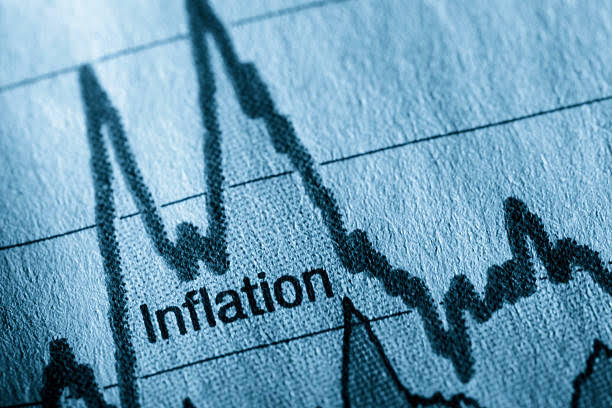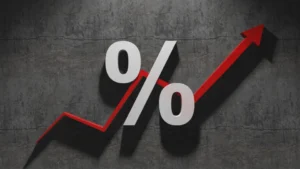Table of contents
ToggleIntroduction
Why does your morning coffee cost 30% more than it did two years ago?
Why are rent, groceries, and electricity bills climbing faster than your salary? These aren’t isolated issues—they’re symptoms of a broader economic phenomenon that affects nearly every aspect of our financial lives: inflation.
Inflation, the general rise in prices over time, is often perceived as a distant concern—something debated by economists and central bankers. But in reality, it directly influences the purchasing power of consumers, the profitability of businesses, and the stability of entire economies. In periods of low, stable inflation, economic growth can flourish. But when inflation surges out of control, it can lead to uncertainty, loss of confidence, and social unrest.
Recent years have reminded us how inflation can quickly become a central issue. From pandemic-driven supply chain disruptions to geopolitical tensions and expansive monetary policies, several forces have converged to push inflation to levels not seen in decades across much of the world. Households are feeling the pinch, investors are rethinking their strategies, and governments are under pressure to react.
To fully grasp the challenges inflation poses today—and how we can navigate them—we need to go beyond the headlines. This article explores three fundamental dimensions of inflation:
- Its causes – both demand-side and supply-side, as well as deeper structural drivers;
- Its consequences – for consumers, businesses, and public institutions;
- The strategies used to control it – through monetary policy, fiscal measures, and long-term reforms.
Whether you’re a student, a professional in finance, or a curious reader trying to make sense of economic shifts, this in-depth guide will help you understand how inflation works—and what can be done about it.
I. The Origins of Inflation: Understanding the Causes
Inflation doesn’t appear out of nowhere. It’s the result of complex interactions between economic demand, production costs, and structural dynamics. Economists typically distinguish between three primary sources of inflation: demand-pull, cost-push, and built-in (or structural) inflation. Understanding these forces is crucial for identifying the root of inflationary episodes and crafting effective responses.
A. Demand-Pull Inflation: When Too Much Money Chases Too Few Goods
Demand-pull inflation occurs when aggregate demand in an economy exceeds its productive capacity. As consumers, businesses, and governments increase their spending, suppliers struggle to meet the growing demand. The result? Prices rise.
This phenomenon is especially common in times of economic expansion or after stimulus measures. For example, during the post-COVID recovery in 2021–2022, many developed countries saw a surge in consumer demand fueled by fiscal stimulus checks, low interest rates, and pent-up savings. Meanwhile, supply chains were still disrupted, unable to meet the sudden spike in demand—leading to price inflation in goods ranging from used cars to electronics.
Key drivers of demand-pull inflation include:
- Increased consumer spending, especially when fueled by wage growth or government transfers;
- Low interest rates, which make borrowing cheaper and stimulate investment and consumption;
- Expansionary fiscal policy, where public spending increases aggregate demand.
In these cases, inflation is often seen as a “side effect” of economic growth—but if left unchecked, it can spiral into something more harmful.
B. Cost-Push Inflation: When Supply Shocks Drive Prices Up
Cost-push inflation arises from increases in the cost of production. When the prices of raw materials, wages, or imported goods rise, businesses often pass those costs onto consumers in the form of higher prices.
This type of inflation is often associated with negative supply shocks. A classic example is the oil crisis of the 1970s, when rising oil prices led to higher transportation and production costs across industries, triggering a global inflationary wave.
More recently, the Russia-Ukraine war in 2022 led to a spike in energy and food prices, especially in Europe. Energy-intensive sectors faced soaring input costs, which translated into higher prices for consumers. Similarly, supply chain issues during the COVID-19 pandemic caused shortages of key materials (like semiconductors), further pushing prices upward.
Common triggers of cost-push inflation include:
- Wage increases not matched by productivity gains;
- Rising commodity prices, especially for essentials like oil, gas, and food;
- Currency depreciation, which makes imports more expensive.
Unlike demand-pull inflation, cost-push inflation can occur even when the economy is stagnant—posing a particular dilemma for policymakers, who risk slowing growth further if they try to curb inflation with higher interest rates.
C. Built-in and Structural Inflation: The Role of Expectations and Institutions
The third category—often referred to as built-in inflation—stems from inflation expectations and institutional dynamics. It’s closely tied to the so-called wage-price spiral: as workers expect prices to rise, they demand higher wages. Businesses, in turn, raise prices to cover higher labor costs, reinforcing inflationary pressure.
This dynamic can lead to self-perpetuating inflation, especially if inflation expectations become “unanchored.” When households and businesses start to believe that inflation will persist, their behavior changes accordingly—leading to more inflation.
Another source of built-in inflation comes from structural rigidities in the economy:
- Strong labor unions with high bargaining power can push wages up;
- Indexed contracts that automatically adjust prices or salaries to inflation;
- Lack of competition in certain sectors, allowing firms to raise prices more easily.
Controlling built-in inflation is particularly challenging because it requires not just short-term economic measures, but long-term credibility in monetary policy. This is why central banks place such a strong emphasis on anchoring inflation expectations through transparent communication and inflation targeting.
II. The Impacts of Inflation: Consequences on the Economy
Inflation, even when moderate, can have far-reaching effects on all actors within an economy. Its consequences vary depending on its intensity, persistence, and the capacity of households, businesses, and governments to adapt. In this section, we explore how inflation reshapes the economic landscape—starting at the level of individual consumers and expanding outward to firms, investors, and public institutions.
A. Impact on Purchasing Power and Households
Perhaps the most visible and immediate consequence of inflation is the erosion of purchasing power. When prices rise faster than wages, individuals and households can afford less with the same income. This disproportionately affects low- and middle-income groups, who spend a larger share of their income on essentials such as food, housing, and energy.
Key effects on households:
- Decline in real income: Even if nominal wages increase, inflation can outpace them, reducing real income.
- Reduction in savings value: Inflation erodes the real value of cash savings, discouraging saving and promoting consumption or investment in inflation-protected assets.
- Social inequality: Inflation tends to widen the gap between those who can hedge against it (through real estate, stocks, or inflation-linked bonds) and those who cannot.
During high-inflation periods, such as the 2022–2023 surge in consumer prices across Europe, many families found themselves adjusting their consumption habits, delaying large purchases, or drawing on savings to maintain their standard of living.
B. Impact on Businesses and Investment
Inflation creates a more uncertain environment for businesses, complicating pricing strategies, wage negotiations, and investment planning.
Key business-related consequences:
- Rising input costs: Firms facing higher costs for raw materials, energy, or labor often pass these onto consumers—if competitive conditions allow.
- Reduced investment clarity: Inflation introduces volatility and uncertainty, making it harder to forecast returns and plan long-term capital expenditures.
- Profit margin pressure: In price-sensitive markets, businesses may be unable to fully pass on cost increases, leading to compressed margins.
- Inventory behavior: In anticipation of higher prices, firms may overstock inventories, which can distort supply-demand dynamics.
Investors, too, must adapt their strategies. Inflation generally erodes the real return on fixed-income assets such as bonds. This explains why investors tend to favor equities, commodities, and real assets (e.g., real estate or gold) in inflationary environments.
C. Impact on Public Finances and Monetary Policy
Inflation also significantly affects how governments manage fiscal policy, debt servicing, and how central banks steer monetary policy.
For governments:
- Higher tax revenues (nominally): Inflation can boost tax collection through “fiscal drag”—as wages rise, taxpayers are pushed into higher brackets.
- Increased public spending: Social transfers, pensions, and subsidies often increase to maintain citizens’ purchasing power.
- Debt burden dynamics: Moderate inflation can reduce the real burden of existing debt, benefiting highly indebted states. However, if interest rates rise quickly, debt servicing costs can also soar.
For central banks:
- Need to raise interest rates: To curb inflation, central banks typically tighten monetary policy by raising key interest rates, reducing money supply, and influencing borrowing conditions.
- Risk of stagflation: When inflation occurs alongside stagnating growth (as seen in the 1970s), central banks face a policy dilemma—tightening rates to fight inflation can worsen unemployment and reduce output.
Credibility is critical: if central banks are perceived as being too slow or too soft on inflation, expectations can become unanchored—fueling built-in inflation, as discussed in Part I.
III. Fighting Inflation: Control and Mitigation Strategies
Taming inflation is one of the most challenging tasks for economic policymakers. It demands a precise diagnosis of inflation’s root causes and the right mix of tools to control it without harming growth or employment. In this section, we explore the three major strategies typically used to fight inflation: monetary policy, fiscal policy, and structural reforms. Each tackles inflation from a different angle—short-term demand management, targeted support, and long-term economic resilience.
A. Monetary Policy: The Primary Weapon Against Inflation
Central banks are the first responders when inflation starts to rise. Their role is to ensure price stability by controlling the money supply and managing interest rates. When inflation is driven by excess demand or rising inflation expectations, monetary tightening is often the most effective tool.
The central bank’s main lever is the policy interest rate. By raising interest rates, borrowing becomes more expensive, and saving becomes more attractive. This slows down household consumption, reduces business investment, and cools the economy—bringing inflation back under control.
For example, in response to the sharp rise in inflation after the COVID-19 pandemic, the U.S. Federal Reserve, the European Central Bank, and other major institutions raised interest rates at the fastest pace in decades. These moves signaled their commitment to anchoring expectations and restoring price stability.
Monetary policy also operates through open market operations, where central banks sell government securities to drain liquidity from the financial system. Additionally, forward guidance and communication are crucial: when central banks credibly signal their intentions, they can influence expectations and behavior before taking any actual action.
However, monetary tightening is not without risk. Raising rates too aggressively can lead to recessions, rising unemployment, or financial instability—especially in economies with high debt levels. Thus, the challenge lies in finding the right pace and intensity, while maintaining public and market confidence.
B. Fiscal Policy: Complementing Monetary Action with Targeted Interventions
While central banks focus on the money supply, governments can use fiscal policy to address the demand side of the economy and cushion the social impact of inflation. Fiscal decisions—about taxation, public spending, and redistribution—can directly influence consumption patterns and inflationary pressures.
In times of excessive demand, governments can reduce public spending or raise taxes to limit the amount of money circulating in the economy. This form of contractionary fiscal policy supports central banks’ efforts to cool down inflation. However, it requires political will, especially when it means cutting subsidies or reducing public services.
On the other hand, when inflation disproportionately affects low-income households—especially through energy or food prices—governments often implement targeted support measures. These include subsidies, direct cash transfers, or temporary price caps. While such measures protect purchasing power, they must be carefully designed to avoid fueling further demand and worsening inflation.
A good example is France’s “bouclier tarifaire” (price shield) implemented in 2022 to cap energy price hikes. It helped limit household exposure to soaring electricity and gas prices during the European energy crisis—though at a high fiscal cost.
In some cases, governments also use temporary tax reductions (e.g., fuel tax cuts) to ease inflationary pressure in specific sectors. While these tools can provide relief, they should not substitute for long-term structural responses. Ultimately, fiscal policy should aim for sustainability and coherence with monetary efforts to ensure inflation control is both effective and equitable.
C. Structural Reforms: Addressing the Root Causes of Inflation
Inflation is not always a short-term phenomenon. In many cases, it reflects deeper structural weaknesses in an economy—supply bottlenecks, inefficient markets, rigid labor systems, or excessive import dependency. To address these root causes, governments must undertake structural reforms that improve the economy’s capacity to absorb shocks and sustain non-inflationary growth.
One of the most powerful structural levers is productivity enhancement. By investing in innovation, digitalization, infrastructure, and education, countries can raise the productivity of labor and capital—allowing for growth without pushing prices up. Higher productivity reduces unit costs, improves competitiveness, and strengthens resilience to global price pressures.
Another key area is energy independence and diversification. Many inflationary shocks—such as the oil crisis of the 1970s or the 2022 energy crunch in Europe—stem from reliance on volatile imports. Developing domestic renewable energy, improving energy efficiency, and creating strategic reserves can reduce vulnerability to global price swings.
Labor market reform is also essential. When wages grow faster than productivity, they can fuel cost-push inflation. Reforms that increase flexibility, improve workforce mobility, and enhance skills can help reduce labor shortages, align wages with productivity, and prevent wage-price spirals.
Finally, structural inflation often stems from poor competition and regulation. In sectors where a few firms dominate (e.g., telecoms, logistics, energy), prices can rise more easily. Promoting competition, improving transparency, and eliminating inefficiencies can bring long-term price discipline to entire sectors.
While structural reforms are politically complex and slow to produce results, they are essential for long-term price stability. Without addressing structural weaknesses, short-term policies may offer relief—but will not prevent inflation from returning.
Conclusion
Inflation is more than a statistic—it’s a powerful economic force that shapes our daily lives, influences business decisions, and tests the resilience of entire nations. As we’ve explored, its origins can stem from excessive demand, rising production costs, or deep-rooted structural factors. Its consequences ripple across society, eroding purchasing power, distorting investment decisions, and challenging public finances. And while the battle against inflation is complex, it is not unwinnable.
What’s clear is that no single strategy can solve inflation alone. Central banks must act decisively to anchor expectations through sound monetary policy. Governments must ensure fiscal responsibility while protecting the most vulnerable through targeted interventions. And over the long term, structural reforms must address inefficiencies and build a more resilient economic foundation.
In an age of global uncertainty—marked by pandemics, geopolitical tensions, and energy shocks—the ability to understand and manage inflation is more vital than ever. Whether you’re a policymaker, investor, student, or entrepreneur, recognizing the causes, consequences, and control mechanisms of inflation will help you make smarter decisions and navigate economic cycles with greater confidence.
Because ultimately, inflation isn’t just about rising prices—it’s about how we respond.





